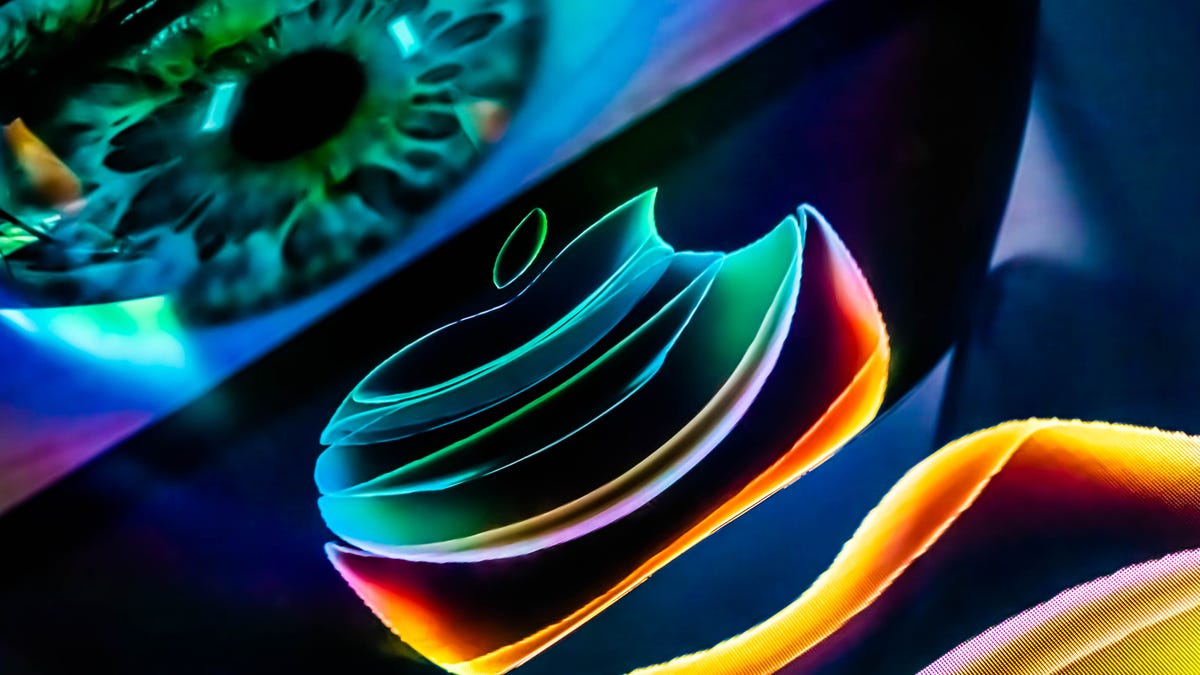 Why You Can Trust CNET
Why You Can Trust CNET Why Apple's First VR Headset May Not Be the One You Buy
The next Apple mixed reality device is reportedly already in the works, and it may be much more consumer-friendly.

Apple's long-expected, quite mysterious mixed reality headset seems ready to emerge any month now: Perhaps it'll be announced as soon as Apple's next WWDC developer's conference, in June. The headset, which will enter an emerging landscape of hardware including Meta's Quest 2 and Quest Pro, the PlayStation VR 2 and a bunch of other AR and VR devices, has been reported to be expensive, maybe have its own tethered processing device and perhaps be very limited in its launch features.
Reports also suggest that Apple's own staff could be divided on whether this headset should launch now, in a not-quite-perfected state, or held for later on when it may approach a more functional pair of everyday glasses.
I'm not sure it makes a difference, because in all likelihood you're not going to buy the first version anyway, which is expected to cost as much as $3,000.
I don't mean to sound dismissive, but it's true: Barring some sort of miracle, there doesn't seem to be any way Apple's first-gen AR/VR device will be anything more than a sort of foot in the door. And, by the way, that's exactly what Apple's previous big product line entries were, too.
The first Apple Watch wasn't the same device it is now.
The first Apple Watch: Did you own one?
I remember reviewing the very first Apple Watch, in 2015, and finding it a pretty mixed bag. Nice design touches, really cool digital crown and... very slow. Also, expensive. And kind of complicated, with all its specific features and settings.
Odds are you didn't own one. Apple added more useful features later: a far faster processor, a bigger screen, an onboard app store, better fitness functions, an always-on display. The price came down, too.
The Apple Watch's biggest advantage now is its consistency. After generations of other smartwatches have come and gone, Apple has largely stayed the course and iterated on a theme.
The original iPhone: More nostalgia trip than good product
The first iPhone was the same story. I loved how it was a very small web-browsing and email-equipped iPod, and it went with me on my honeymoon. The 2G cellular data was terrible, and most of the features we associate with iPhones (video chat, GPS, Apple Pay, Touch ID or Face ID, an App Store) weren't around. It was a fancy iPod phone.
The multitouch was impressive, and certain apps, like Google Maps, were stunning. People thought it was cool. Few people were ready to buy one.
AirPods: Initially mockable
I test-drove AirPods at Apple's 2016 iPhone event, and a photo of me wearing them ended up becoming a meme. It was a given that they looked absurd. Yes, these were wireless earbuds, but wireless earbuds already existed. The price wasn't bad, but plenty of people seemed happy with the cheap, free-with-iPhone wired earbuds that wouldn't fall out of your ears and get lost, or didn't look like cigarette butts sticking out of your ears.
But it didn't take long for opinion on AirPods to shift, and now... well, they're everywhere.
The Meta Quest Pro: Since its first VR headset in 2016, Meta is still trying to find a perfect form.
How much patience does Apple have?
The big question is how much time Apple has to give to its headset, and multiple iterations of it, to succeed. That'll be the difference between success and failure. Meta stuck with the Oculus Rift from 2016 to now, creating many versions before the Quest 2 finally started selling decently. It could take years before the real applications of VR and AR are figured out on a larger scale and wireless networks are able to take on the cloud processing that could allow these headsets to eventually work in smaller, lighter forms.
It could be years before input devices like Meta's neural input wristbands are advanced enough to allow accurate gesture controls that could really be used to replace controllers and touchscreens. It may take several generations of hardware before enough people are in VR and AR to allow truly large-scale metaverse communities to feel meaningful, even after all these years waiting for the tech to arrive.
Apple's headset will most likely involve every other product in its lineup, connecting with iPhones, iPads and Macs, enhancing the Apple Watch, and pairing with AirPods. It'll need to bridge every OS and every service. That's no small amount of work, and it's doubtful that most of it will be enabled this year.
Whatever next-gen, more affordable headset Apple is expected to work on next, or the eventual glasses it's aiming for, will be closer to the end goal. As every other VR and AR hardware manufacturer also continues to flex and evolve its offerings, from HTC's more glasses-like XR Elite to Qualcomm's smaller AR glasses to Meta's gradual pivot from VR to an AI-driven AR platform, we don't know what the final form of any of these headsets will be.
And every VR and AR headset looks weird. I've never worn a headset that didn't make me look either absurd or terrifyingly dystopian.
In that sense, whatever Apple's first headset looks like doesn't really matter, because the future for Apple and every other VR/AR company is bound to continue to change. This year looks like a make-or-break year for the metaverse, but in the long run, it's also just a foot in the door.

